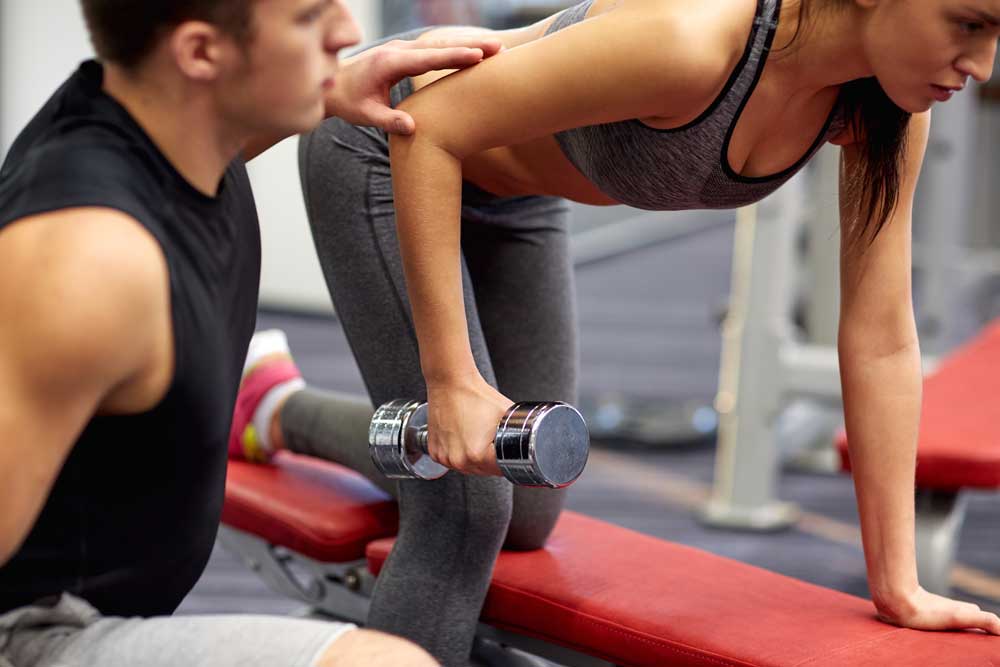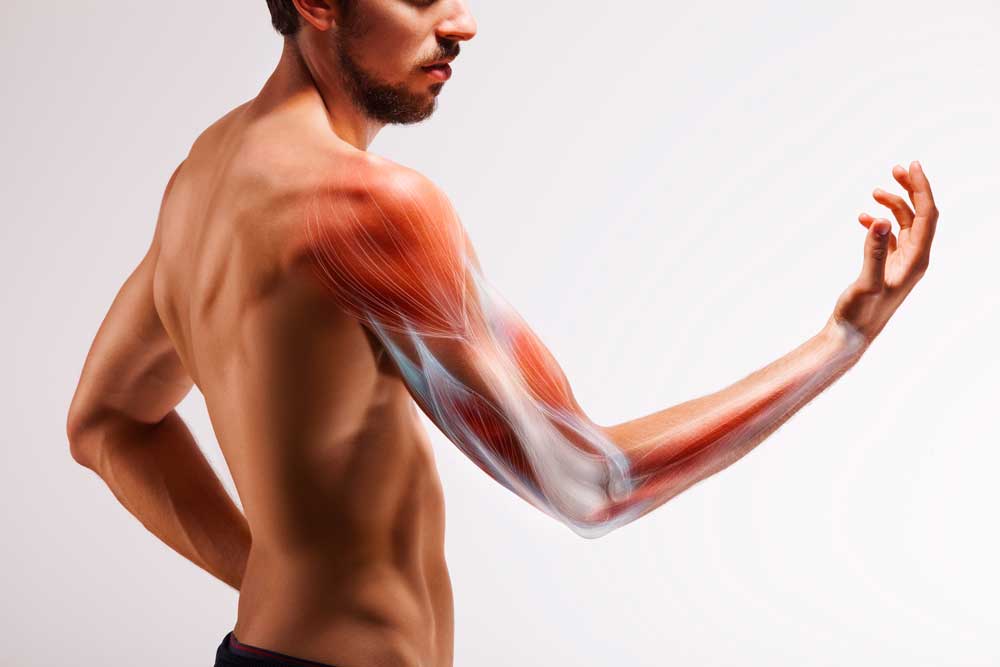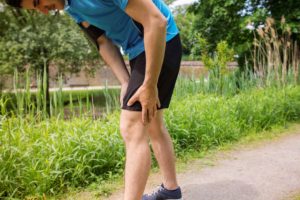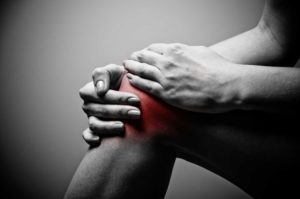At the Muscle Doc Method clinic, we see a wide variety of sports injuries in our athletes. One of the most common issues we treat is biceps tendinitis, a condition that causes pain and discomfort at the head of the biceps near the shoulder. This issue can keep our athletes from training regularly and can prevent them from performing at their highest levels.
Shoulder pain, arm pain, and biceps pain is a common condition for athletes like bodybuilders, Cross Fitters, MMA fighters, and more. It is, however, treatable and preventable with focused care and proper holistic therapies.
Let’s learn more about the causes of biceps tendinitis and the effective treatment plans available with the Muscle Doc Method.

What is the Biceps Tendon?
The biceps tendon is located in the upper arm near the shoulder. The biceps brachii muscle has two long muscular heads, one long and one short. The tendon that attaches the long head of the biceps muscle to the shoulder and is usually the tendon that causes a problem. This tendon begins on the shoulder socket, then slides between a groove in the humerus where it attaches to the biceps muscle. Its function is to act as a pulley, allowing you to lift and flex your upper arm and stabilize the shoulder joint.
What is Biceps Tendinitis?
Biceps tendinitis, or biceps tendinopathy more broadly, is a condition in which the biceps tendon becomes damaged and inflamed. Over years of repetitive movement or overuse of the biceps, the tendon can become weak, irritated, or injured. This then leads to tendinitis and often pain, soreness, and diminished ability and strength of the bicep. The most common problem area is right in the groove of the humerus where the tendon slides.
If you have biceps tendonitis, you will likely feel soreness and pain on the front of the shoulder and upper arm. The area may appear red or swollen. Activities, like raising your arms overhead, carrying heavyweights, or putting any weight on the shoulder joint will likely cause pain. In some cases, the tendon itself ruptures with a loud popping or snapping sound.

What are the Causes of Biceps Tendinitis?
Biceps tendinitis is a painful condition and rarely occurs in isolation. Because of the complex and vulnerable structure of the shoulder, we usually see other issues at play such as rotator cuff impingement syndrome, rotator cuff tears, labral tears, shoulder instability, and other common shoulder injuries.
There are many potential causes of biceps tendinitis, but some of the most common causes for our athlete patients include overuse, improper lifting form, and a few particular lifestyle factors.
Improper Form and Overuse
Many athletes suffer from overuse of the shoulder joint. This leads to not only biceps tendinitis, but a range of potential shoulder issues and injuries like rotator cuff injuries, SLAP lesion tears, or osteoarthritis. Frequent heavy lifting and overhead arm exercises can lead to strain and inflammation of the biceps tendon. Over time, multiple microtears occur in the collagen that makes up the tendon and leaves it more susceptible to injury. Similarly, improper weight lifting form is also a common way to damage the tendon.
Lifestyle Factors
Certain lifestyle factors can have an effect on the resilience of the biceps tendon. Aging is a normal process, but it can cause weakness or brittleness in the tendon. After the age of 30, we are more vulnerable to issues like biceps tendinitis. Diet can also play a part. Eating an anti-inflammatory diet can help to prevent excess irritation of the tendon and relieve pain.
Athletes and Biceps Tendinitis
Due to high training levels, shoulder issues and biceps tendinitis is a common problem for many athletes like heavy lifters, bodybuilders, swimmers, gymnasts, and martial artists. Athletes that practice weight-bearing exercises, overhead exercises, throwing, or contact sports are more likely to damage and inflame this tendon and develop biceps tendinitis. Athletes need to pay special attention to keeping their bicep tendons healthy and strong. Recovery from biceps tendinopathy can last weeks or months. Reduce weight-bearing exercises on the shoulder and biceps if you suspect you might be developing biceps tendinitis. Seek out holistic and expert treatment to prevent further damage and keep you performing at your best.
Conventional Treatment for Biceps Tendinitis
The conventional path for treatment typically involves a visit to a sports medicine doctor or physiotherapist with a full MRI or ultrasound. After a diagnosis, it’s common to be given an anti-inflammatory drug like an NSAID or cortisone injection. This can reduce symptomatic inflammation and pain, but the tendon still requires holistic healing.
The Muscle Doc Method Treatment of Biceps Tendinitis
The Muscle Doc Method treatment plan for biceps tendonitis is unique to our clinic and therapist Christopher Brenner. The goal for treatment of biceps tendonitis is to not only relieve pain, reduce inflammation, and stimulate healing, but to return the biceps tendon back to its previous strength and flexibility. Without a complete, holistic healing process, the tendon will fail to regain it’s original power and will be vulnerable to further injury and discomfort.
At the Muscle Doc Method, we use a variety of time-tested and science-backed techniques to provide the best care for your unique athletic needs. Therapies such as acupuncture, trigger point therapy, cupping, Graston, and massage may be used to help heal the tendinitis and ensure a strong, healthy biceps muscle. These therapies work with the body to help encourage healthy blood flow and faster healing.
Regain Your Strength with The Muscle Doc Method
As a dedicated athlete, you know you are only as strong as your weakest link. With proper care and guidance, you can regain your health and strengthen your biceps tendon and muscle to perform at your best. Contact us for more information on receiving world-class care at the Muscle Doc Method, or book your visit now.




